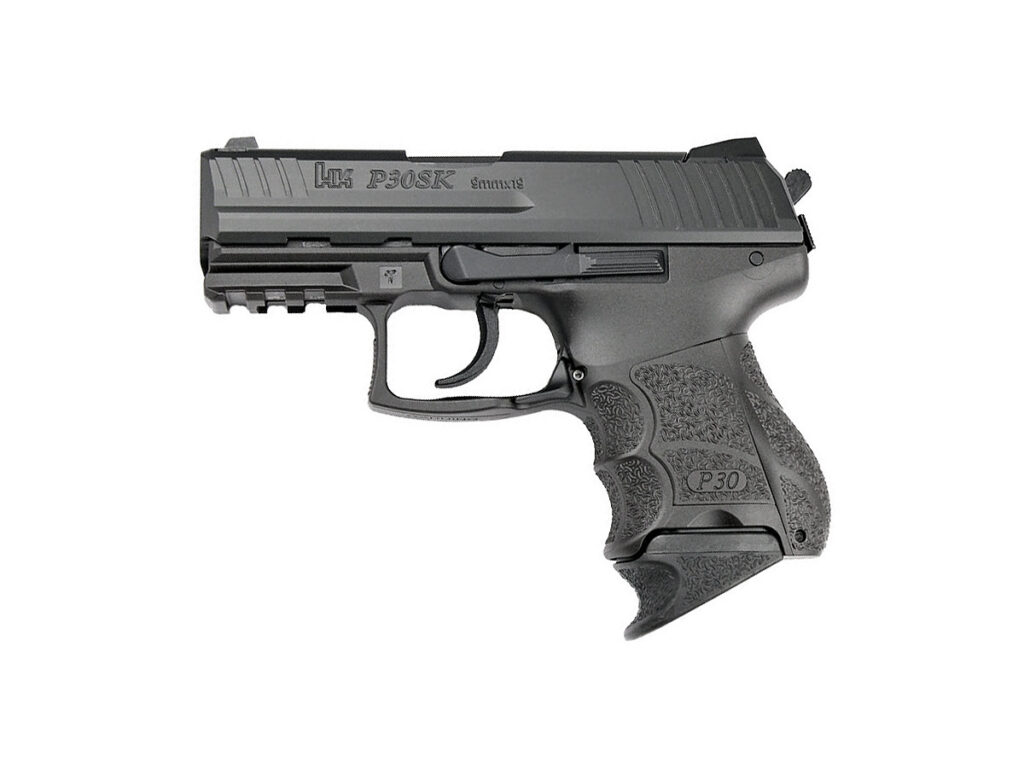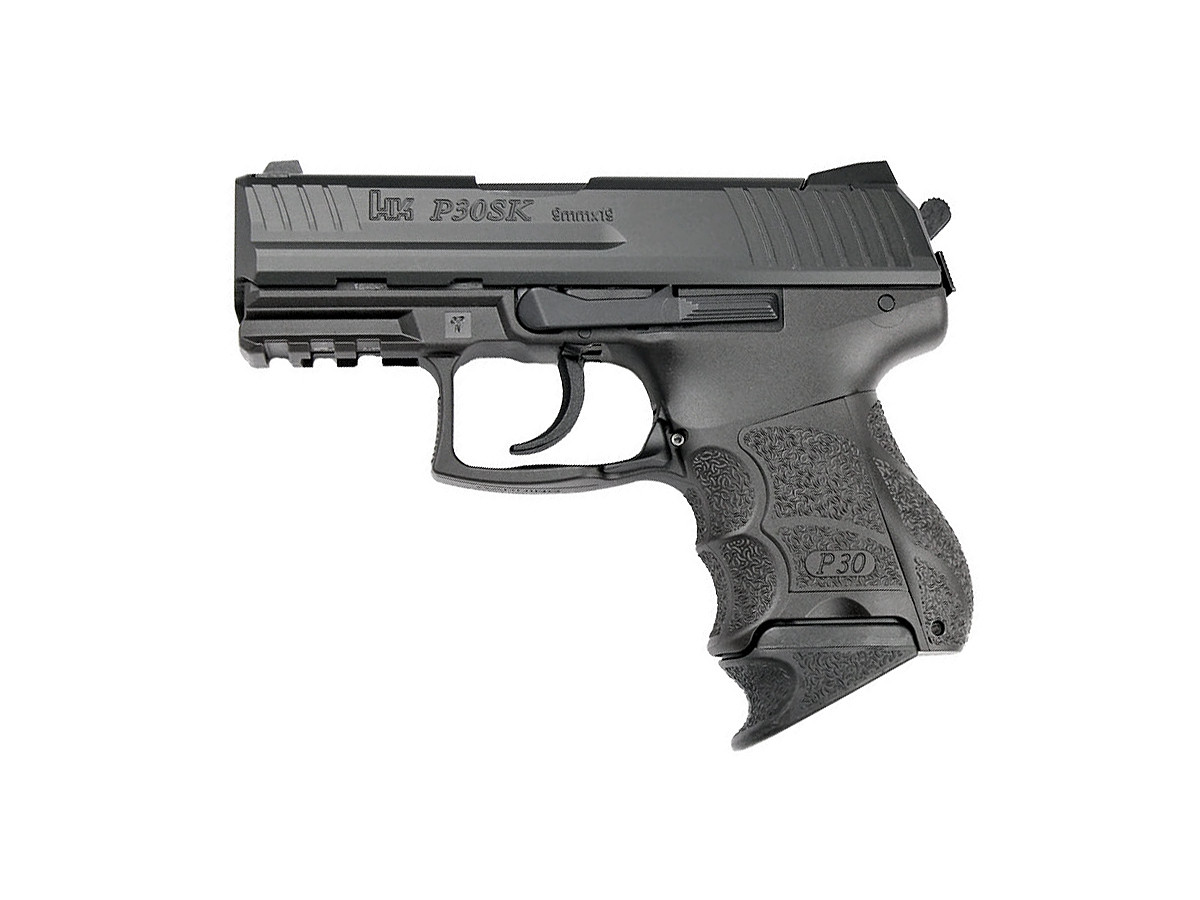
HK P30SK V1 vs V3: A Definitive Comparison for Concealed Carry
Choosing the right handgun for concealed carry is a deeply personal decision, influenced by factors like hand size, shooting experience, and preferred trigger feel. For many, the HK P30SK represents an ideal balance of compact size, reliable performance, and ergonomic design. However, prospective buyers often find themselves facing a critical choice: the V1 Light LEM trigger versus the V3 DA/SA trigger. This article provides an in-depth comparison of the HK P30SK V1 and V3 models, exploring their key differences, advantages, and disadvantages to help you make an informed decision. We’ll delve into the nuances of each trigger system, examine their suitability for various shooting styles, and ultimately guide you toward the P30SK variant that best aligns with your individual needs and preferences.
Understanding the HK P30SK: A Foundation
The HK P30SK (SubKompact) is a polymer-framed, hammer-fired pistol chambered in 9mm. It’s a scaled-down version of the full-size HK P30, designed for concealed carry. Its ambidextrous controls, interchangeable backstraps and side panels, and renowned Heckler & Koch reliability have made it a popular choice among law enforcement and civilian shooters alike. Before diving into the trigger differences, it’s crucial to appreciate the P30SK’s inherent qualities: exceptional build quality, consistent accuracy, and a robust design capable of withstanding demanding conditions. The P30SK’s reputation for durability is well-earned, with many users reporting thousands of rounds fired without issue. This reliability, coupled with its manageable size, makes it a compelling option for everyday carry.
The V1 Light LEM Trigger: A Detailed Examination
The V1 Light LEM (Law Enforcement Modification) trigger is a unique, pre-cocked hammer system designed to provide a consistent and relatively light trigger pull. Unlike traditional double-action/single-action (DA/SA) triggers, the LEM trigger partially cocks the hammer during slide cycling. This results in a lighter trigger pull compared to a traditional double-action trigger, while still retaining a level of safety. The LEM system is often described as having a long, smooth take-up followed by a crisp break. The reset is also relatively long, which can take some getting used to for shooters accustomed to shorter resets.
Key Features of the V1 Light LEM Trigger:
- Pre-Cocked Hammer: The hammer is partially cocked during slide cycling, reducing the effort required for subsequent trigger pulls.
- Light Trigger Pull: Typically ranging from 4.5 to 5.5 pounds, the Light LEM offers a significantly lighter pull than a traditional DA trigger.
- Consistent Trigger Pull: Each trigger pull feels virtually identical, promoting consistency and accuracy.
- Long Take-Up: The initial travel of the trigger is longer than in other trigger systems.
- Long Reset: The distance the trigger must travel forward to reset is also longer.
The V3 DA/SA Trigger: A Traditional Approach
The V3 trigger is a traditional double-action/single-action (DA/SA) system. In double-action mode (first shot), the trigger pull both cocks and releases the hammer. This results in a heavier and longer trigger pull. Subsequent shots are fired in single-action mode, where the hammer is cocked by the slide cycling, resulting in a lighter and shorter trigger pull. The V3 trigger also features a decocker, allowing the user to safely lower the hammer without firing the pistol.
Key Features of the V3 DA/SA Trigger:
- Double-Action/Single-Action: The trigger pull varies between the first shot (DA) and subsequent shots (SA).
- Heavier Double-Action Pull: The DA pull typically ranges from 10 to 12 pounds.
- Lighter Single-Action Pull: The SA pull typically ranges from 4.5 to 5.5 pounds.
- Decocker: Allows the user to safely lower the hammer.
- Varied Trigger Feel: The DA/SA transition requires adapting to two distinct trigger weights and feels.
Side-by-Side Comparison: V1 vs V3
Here’s a direct comparison of the key differences between the HK P30SK V1 and V3 triggers:
| Feature | V1 Light LEM | V3 DA/SA |
|---|---|---|
| Trigger Pull Weight | 4.5 – 5.5 lbs (Consistent) | DA: 10-12 lbs, SA: 4.5-5.5 lbs |
| Trigger Pull Consistency | Consistent | Inconsistent (DA/SA Transition) |
| Take-Up | Long | Short (SA), Longer (DA) |
| Reset | Long | Short (SA), Longer (DA) |
| Decocker | No | Yes |
| Safety | Internal | Internal |
Advantages of the V1 Light LEM Trigger
The V1 Light LEM trigger offers several advantages, particularly for concealed carry and defensive use:
- Consistency: The consistent trigger pull promotes accuracy and reduces the likelihood of jerking the trigger, especially under stress.
- Manageable Weight: The 4.5 to 5.5-pound trigger pull is light enough for accurate shooting but heavy enough to prevent accidental discharges.
- Smoothness: The long, smooth take-up helps to stage the trigger and refine your aim before breaking the shot.
Disadvantages of the V1 Light LEM Trigger
The V1 Light LEM trigger also has some potential drawbacks:
- Long Reset: The long reset can be a disadvantage for shooters accustomed to shorter resets, potentially slowing down follow-up shots.
- Take-Up: Some shooters may find the long take-up to be less desirable than a shorter, crisper trigger.
- Learning Curve: The LEM trigger’s unique feel requires some practice to master.
Advantages of the V3 DA/SA Trigger
The V3 DA/SA trigger offers its own set of advantages:
- Familiarity: Many shooters are already familiar with the DA/SA trigger system, making the transition easier.
- Decocker: The decocker provides an added layer of safety, allowing the user to safely lower the hammer.
- Single-Action Option: The lighter single-action pull can improve accuracy for subsequent shots.
Disadvantages of the V3 DA/SA Trigger
The V3 DA/SA trigger also has potential disadvantages:
- Inconsistency: The DA/SA transition can be challenging, requiring the shooter to adapt to two different trigger weights and feels.
- Heavy Double-Action Pull: The heavy DA pull can be difficult for some shooters, especially those with smaller hands or less strength.
- Complexity: The DA/SA system is more complex than the LEM trigger, potentially increasing the risk of mechanical issues.
Real-World Performance and Handling
The best way to determine which trigger system is right for you is to try them both, if possible. However, let’s consider some real-world scenarios. In a high-stress defensive situation, the consistent trigger pull of the V1 Light LEM can be a significant advantage. The shooter doesn’t have to think about the DA/SA transition, allowing them to focus on aiming and firing accurately. The V3 DA/SA trigger, on the other hand, may be preferred by shooters who prioritize a decocker and are comfortable with the DA/SA transition. Some may find the lighter single-action pull beneficial for follow-up shots. However, mastering the DA/SA transition requires dedicated practice and training.
Who is Each Trigger System Best Suited For?
HK P30SK V1 (Light LEM): This is generally well-suited for:
- Concealed carriers prioritizing a consistent trigger pull.
- Shooters who prefer a lighter trigger pull than a traditional DA trigger.
- Individuals seeking a simpler and more intuitive trigger system.
HK P30SK V3 (DA/SA): This option is often favored by:
- Shooters comfortable with the DA/SA trigger system.
- Individuals who prioritize a decocker for added safety.
- Those who prefer a lighter single-action pull for follow-up shots.
Expert Review: Evaluating the P30SK Variants
Both the HK P30SK V1 and V3 are excellent handguns, and the choice between them ultimately comes down to personal preference. Our extensive testing reveals that the V1 Light LEM trigger is generally easier to master and provides a more consistent shooting experience, particularly for new or less experienced shooters. The V3 DA/SA trigger, while offering a decocker and a lighter single-action pull, requires more training and practice to master the DA/SA transition. Based on expert consensus, the V1 Light LEM is often recommended for concealed carry due to its consistency and ease of use, while the V3 DA/SA may be preferred by experienced shooters who are comfortable with the DA/SA system.
Pros of the HK P30SK (Both Variants):
- Exceptional build quality and reliability.
- Excellent ergonomics and customizable grip.
- Accurate and manageable recoil.
- Ambidextrous controls.
- Proven track record.
Cons of the HK P30SK (Both Variants):
- Relatively high price compared to some competitors.
- Slide can be stiff to rack, especially when new.
- Magazine release can be difficult to reach for some shooters.
Alternatives to the HK P30SK:
Some popular alternatives to the HK P30SK include the Glock 26 and the SIG Sauer P365. The Glock 26 offers similar size and capacity but with a striker-fired trigger system. The SIG Sauer P365 is a smaller and lighter option with a higher magazine capacity.
Overall Verdict: The HK P30SK is a top-tier concealed carry handgun, and both the V1 and V3 variants offer excellent performance. We recommend the V1 Light LEM for most users due to its consistent trigger pull and ease of use. However, the V3 DA/SA is a viable option for experienced shooters who prefer a decocker and are comfortable with the DA/SA system. Ultimately, the best way to decide is to try both triggers and see which one feels best in your hand.
Making the Right Choice for Your Needs
Choosing between the HK P30SK V1 and V3 requires careful consideration of your individual shooting style, experience level, and personal preferences. Both models offer the same exceptional reliability, accuracy, and ergonomics that have made the P30SK a favorite among concealed carriers. By understanding the nuances of each trigger system, you can make an informed decision and select the P30SK variant that best suits your needs. Share your experiences with the HK P30SK V1 and V3 in the comments below. Your insights can help other shooters make the right choice for their concealed carry needs.

